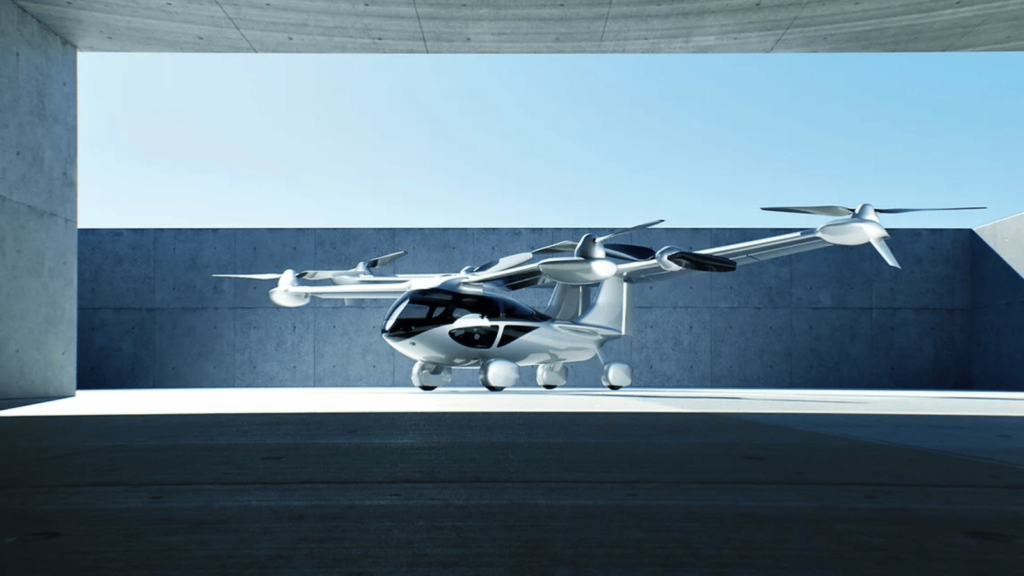Almost every major tech company was present at CES to announce or reveal some of the products they’ve been working on. We’ve already compiled lists of the ‘actually useful’ stuff and the products that made us scratch our heads. However, there’s a question that always seeps into our minds around this time of year: When is this actually going to be a thing?
Some manufacturers are more levelheaded than others with their predicted launch dates. Some don’t even bother with dates. Nevertheless, here are some of CES 2023’s announcements that probably won’t be real for a while.
Aska A5 ‘flying’ ‘car’
It turns out that some people have differing definitions of what a car is. According to Aska, a drivable helicopter also counts. The Silicon Valley startup unveiled its first fully functional prototype of the A5, an electric vertical takeoff and landing vehicle (eVTOL). This isn’t exactly what the 1962 cartoon documentary The Jetsons predicted. But that’s set in 2062, so Aska still has time to polish.
When you’re on the ground in the A5, the wings origami themselves above your seat, and an electric motor will supposedly get you up to over 100km/h. That’s fast enough to take off from a runway like a regular aeroplane. When it’s time to take flight, the wings unfurl themselves and its six electric motors get you airborne.
Aska claims the A5 will have a range of around 400km but that isn’t just from the onboard Lithium-ion batteries. It also employs a dirty fossil fuel-burning generator to extend its range by charging the batteries. It also acts as a backup should the batteries fail. And if your flying car decides mid-flight that it doesn’t identify as a plane anymore, a parachute will assist with your sudden descent.
Preorders for the A5 are already possible (with a $5,000 dollar deposit) and Aska reckons the A5 will grace roads and skies from 2026. But at $789,000 (R13.5 million) a pop we think that might be a little too… enthusiastic. That’s not to mention how the world’s governments will react and the regulatory hoops that will follow. We don’t think it’s likely these will darken our skies (or any skies) before, and possibly not for a few years after, the proposed 2026 launch.
Samsung Flex Hybrid
Remember that LG sliding phone that never came to be? The Flex Hybrid is the amalgamation of that and Samsung’s Galaxy Fold range. It’s a tablet-sized gadget with a folding OLED display that also pulls out. You’ll have the option of 10.5in or 12.4in screen sizes and 4:3 or 16:10 aspect ratios respectively.
There isn’t much else known about the concept device and we wouldn’t count on seeing one on a shelf near you in the near future. Or at all, in its current form. It’s more likely that the company will use it as a proof of concept to refine the tech before sticking it into a new smartphone that is way too expensive and easily breakable.
Volkswagen ID.7 & BMW iVision Dee
BMW first debuted this sort of tech at CES in 2022. The new iVision Dee concept uses 240 e-Ink panels offering 32 possible shades for your new companion. And we do mean companion. The company is billing the iVision Dee as “a digital companion that interacts emotionally with you and accompanies you on a journey between physical and virtual reality”. Dee is short for “Digital emotional experience” after all.
Neither BMW nor VW has any plans to sell these vehicles in their current form. These concept cars are just that, made to show off the ideas both working on with plans to maybe implement them in future vehicles. For now, it seems the best way to customise your car is with a can of spray paint. It isn’t as elegant but it’ll be a whole lot cheaper.
Read More: What CES 2023 tells us about the immediate future of technology
Q-bear Al baby crying translator
The company says the device uses AI to recognise which of the four needs your baby’s cries are a result of. Because human babies only have four needs, apparently. It can also tell just how uncomfortable your baby is based on the very well-known baby discomfort index.
While there was a physical device present at CES, we don’t think it’s going to make it very far past that point. The way things are going with American and EU lawmakers, a device that could very easily harvest a baby’s data probably isn’t going to go down well.
LG Display’s 0.42in OLEDoS
Along with automotive companies, TV manufacturers also have a hard time staying flaccid at CES. The usual crowd of Samsung, LG, TCL, and Hisense were out in full force with all their new enormous displays and laser projectors. But LG Display laid claim to the most interesting product – a 1cm high-resolution OLED on silicon (OLEDoS) microdisplay.
The specs are no slouch. It features a 1024×768 resolution which may not sound like much, but at 1cm across, that works out to around 3,500 ppi. For context, most flagship smartphone displays top out at around 500-600 ppi. It’ll also get crazy bright, up to 7,000 nits, and can manage a refresh rate of 120Hz.
Now, what to do with it? The most obvious answer is to stick it into AR/VR goggles or make a really small watch. Both are possibilities but the former is far more likely given the world’s current impetus. And if it takes anyone as long as it has taken Apple to make AR goggles then we won’t be seeing this in any tech this century.
